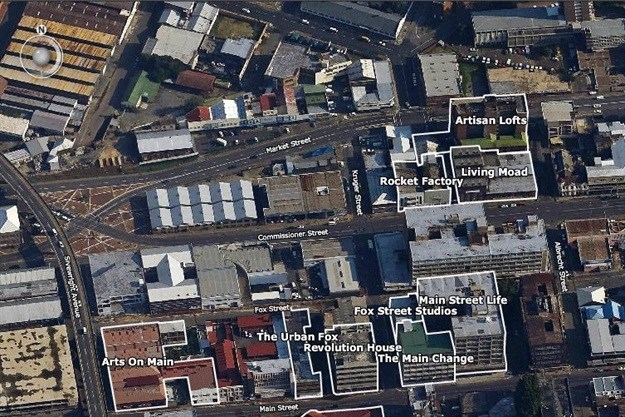New approaches to urban planning in property sector
Based on our work and environment exposure, we anticipate that the following trends will create the opportunity for the construction and engineering sectors to get back on their feet in the short- to medium-term:
1. New kind of urban centres
We are seeing a breakaway from the traditional one-dimensional planning of new urban and city centres that is aimed at future proofing these developments - and this is driving a movement towards new urbanism.

A global design movement, new urbanism promotes the restoration of compact, walkable, mixed-use urban developments that bring residential neighbourhoods, retail and commercial parks back together in a healthy city environment. In South Africa - particularly in Gauteng - there are already several successful examples of mixed-use developments, including; Menlyn Maine, Steyn City and Waterfall Estate. Although these examples do still fall within what would be considered urban or built up areas, we expect to see a similar approach as new urban mixed-use developments become visible across more projects in areas outlying urban or city centres.
2. Finding the home-sweet-home sweet spot
Closely related to this new urbanism are vast opportunities to tap into previously unconsidered property markets across more remote or rural areas in the country. Commercial centres, for instance, haven't changed as fast as residential centres in recent years. There is a growing need, however, for residential space in both the emerging middle and low income brackets.

Cosmo City outside Kayasands, for instance, started out as a small industrial area, but soon had to meet demands for residential development as people looked to move closer to employment opportunities. However, this placed significant strain on existing infrastructure and increasing community demands for basic services led to the planning and subsequent development of Cosmo City that includes commercial, retail and a budding residential sector that caters for both lower income and emerging middle class households. While not a self-enclosed development, Cosmo City is a great example of how the thinking behind a mixed-use development can tap into new markets, planning developments around people and meeting their current and future needs.
3. Urban renewal
Despite this growing movement towards new urbanism, the importance of our existing urban and city centres remains undiminished. In fact, there is a concurrent growing trend of urban renewal, or rejuvenation of old city centres, which may take place in different phases, two of which may include:
- Retro-future proofing old city centres. This requires a mindset change towards the older city centre - particularly where there may be vacant buildings - and looks at how these vacant buildings and surrounding servitudes in the city centre may be adapted to meet the needs of new generations. A great example of this is the Maboneng Precinct in Johannesburg that looked at converting old commercial buildings into apartment buildings. There are many similar examples in Johannesburg, Pretoria, Cape Town and Durban.
 Maboneng Precinct. Image source: www.mabonengprecinct.com
Maboneng Precinct. Image source: www.mabonengprecinct.com - With this retro-future proofing, key consideration also needs to be given to how people, goods and services can be mobilised with viable transport alternatives within these new city centres. That said, in Gauteng the BRT system that is being implemented within Johannesburg city centre and Sandton, for instance, is a great move forward in this regard. Additionally, building more along the servitudes of the Gautrain offers a great opportunity to increase accessibility and mobility of people within these city centres.
In South Africa, we have seen property trends come full-circle. People want more community-focused spaces; to live, work and play - and it's clear that tapping into the needs and desires of the ever-growing population will continue to create opportunities in South Africa's property development sector.
About William Johnston
View my profile and articles...